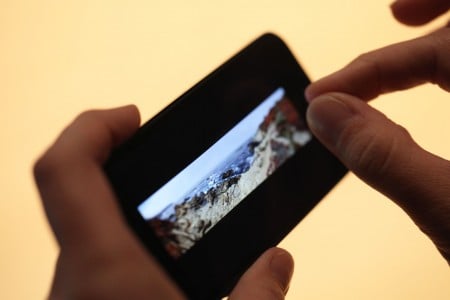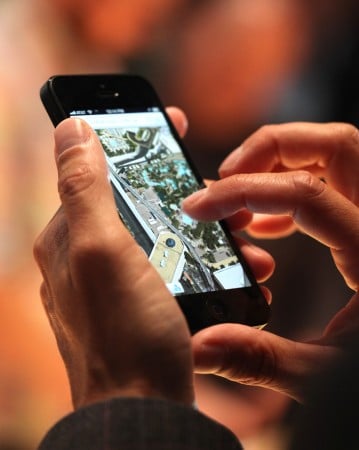Data in, data out
As expected, the iPhone 5 comes with ‘4G’, or more accurately, LTE mobile wireless compatibility. As we’ve learned from Apple’s 4G-equipped New iPad, not all LTE networks are the same, and that New iPad is not compatible with Australian LTE networks.
Apple has addressed this issue in the iPhone 5 and provided support for more LTE frequencies around the world, which include Europe, Asia and Australia. Apple confirms that the iPhone 5 works with Telstra, Optus and Virgin LTE networks.
Also, the iPhone 5 has switched to the new nano-SIM, meaning that carriers will need to supply you with a new SIM to use the phone.
No go for ‘tap and go’
Apple has chosen not to include Near Field Communication (NFC) capabilities its new phone. Considering that smartphones from Samsung, Sony, Nokia and HTC all come with this technology, it was expected that the iPhone 5 would also followed suit.
Having made a global assessment of NFC infrastructure, however, Apple says it does not feel the market is ready for ‘tap and go’ type applications, such as transferring funds to a retail merchant kiosk, and similar to what you can do with today’s Visa PayWave and Mastercard PayPass enabled credit cards.
Audio improvements
Apple has completely revamped its headphones, whose general awfulness has always been out of step with the quality of the iPhone and iPod products to which they’ve been mated. Named Earpods, the headphones have been designed to better fit our ears, and there are separate positions for each of the low-, mid- and high-end speakers to enhance sound quality. When trying them out, the EarPods did fit better into this writer’s ears, and there was a distinct improvement in overall bass levels.

Other audio enhancements including a new beam-forming, directional microphone system for higher quality sound, while background noise fades away with new noise cancelling technology.
Enhanced camera
While it’s still an 8 megapixel camera, the new iPhone 5 has an improved camera and image processing system. The new camera is 30 percent thinner than the one in the 4S and is also more durable, with the addition of a sapphire lens cover. iPhone 5 will now also automatically stitch a series of separate images together to create panoramas.

New iOS
The iPhone 5 also marks the debut of iOS6, which is the latest version of the iPhone and iPad’s operating system. This brings a number of tweaks and new features, the most notable being a completely overhauled mapping system, turn-by-turn navigation, (which is not yet confirmed by Apple for Australia) and flyover view.
There’s an updated Siri Personal Assistant feature too, with more access to sports, restaurants, movies, Facebook integration, and an improved Mail app and Safari Web browser.
Also, the good thing about iOS6 is that you don’t need to buy a new phone, as it will be available as a free download for existing iPhone users on September 19th.
When and how much?
The iPhone 5 will appear in Apple stores in Australia from 21 of September, and can be pre-ordered online from tomorrow (Sept 14).
There are three different memory sizes that can be purchased: 16GB, 32GB and 64GB. Pricing for outright purchases start at $799 for the entry level iPhone 5, $899 for the middle model and $999 for the top of the range.
Valens Quinn traveled to San Francisco courtesy of Apple Australia.


































